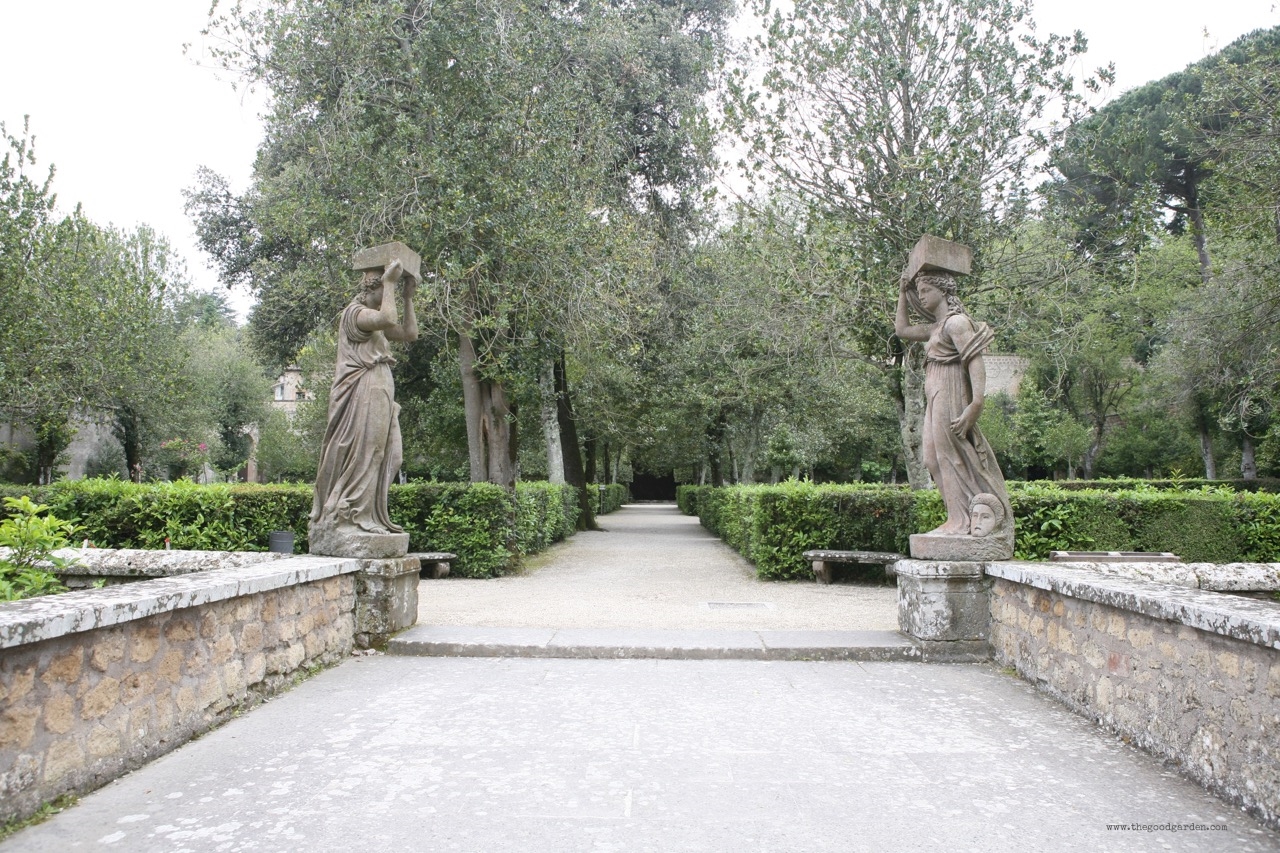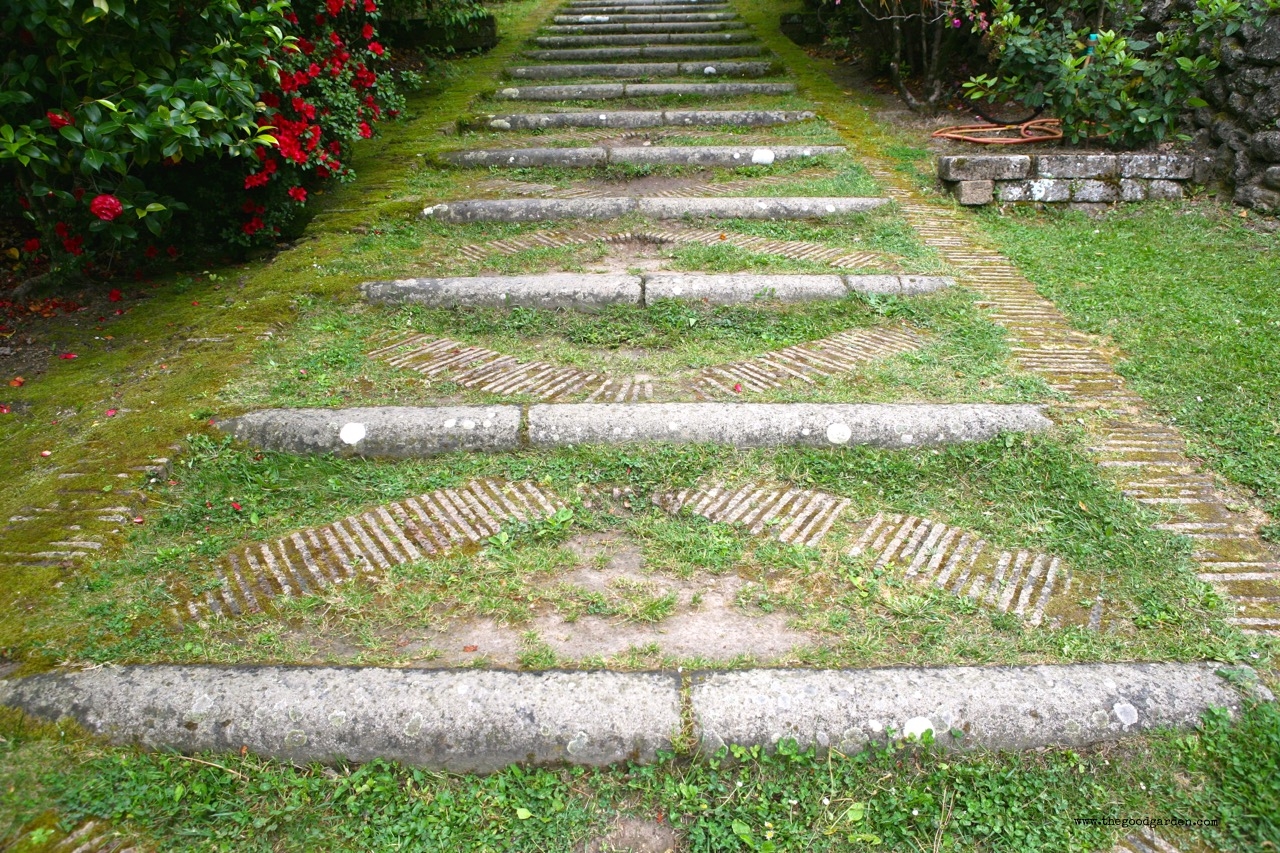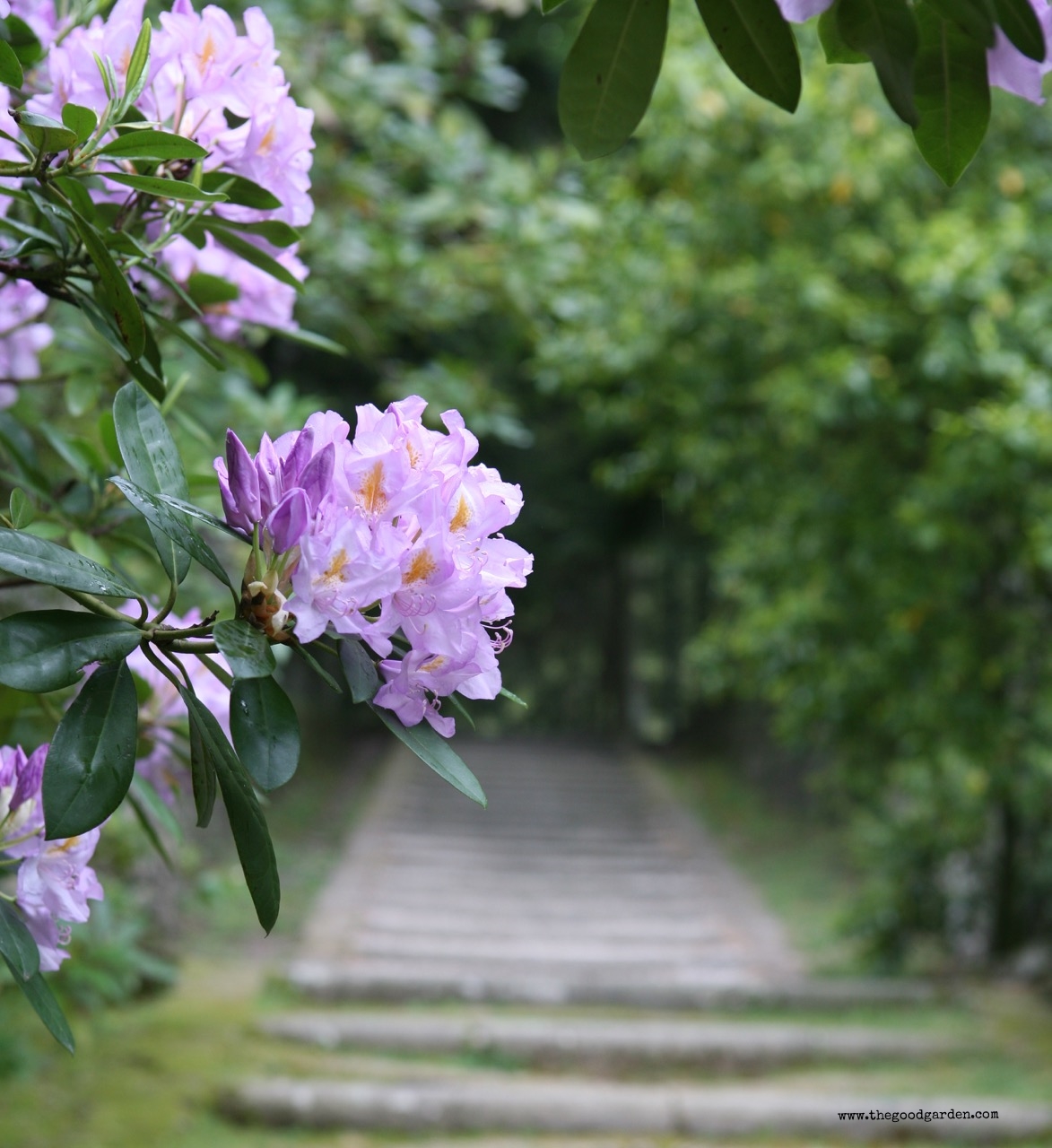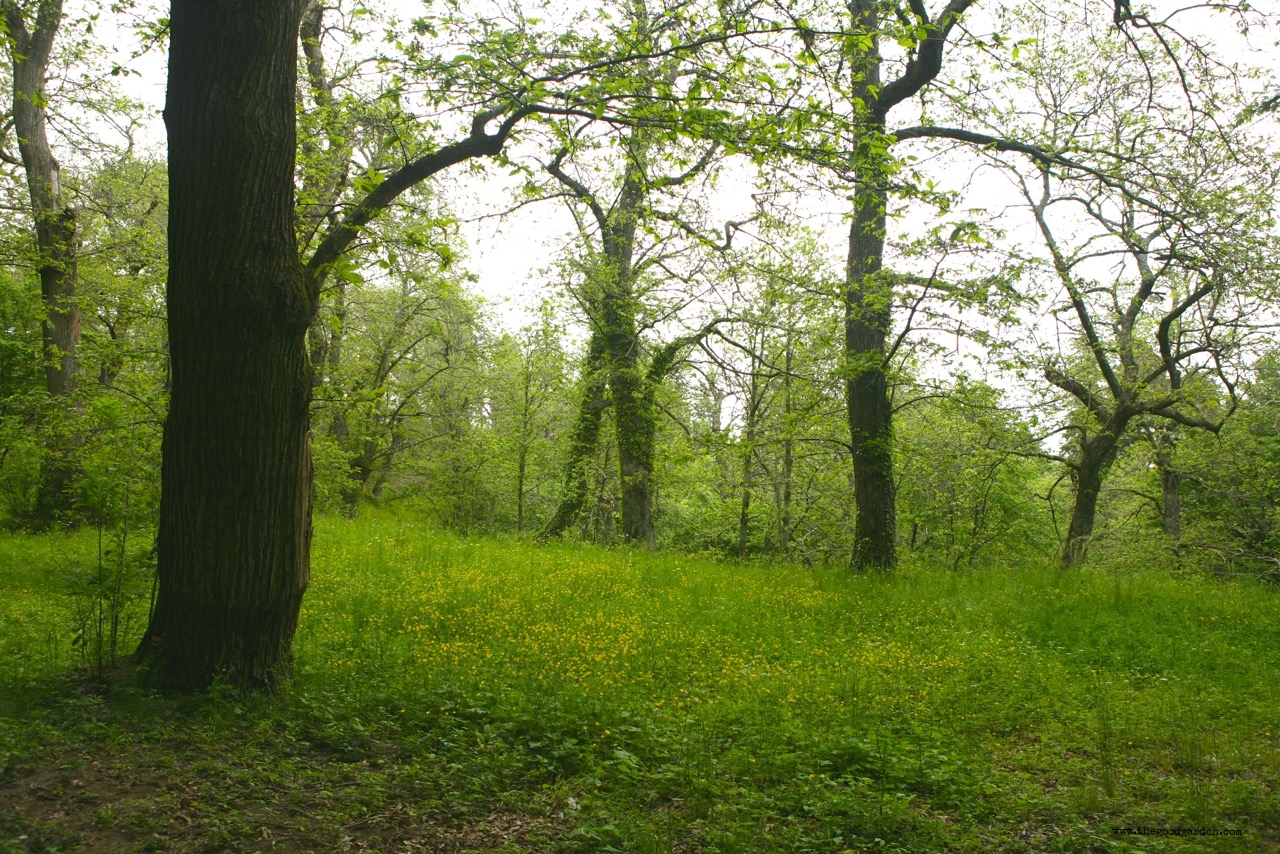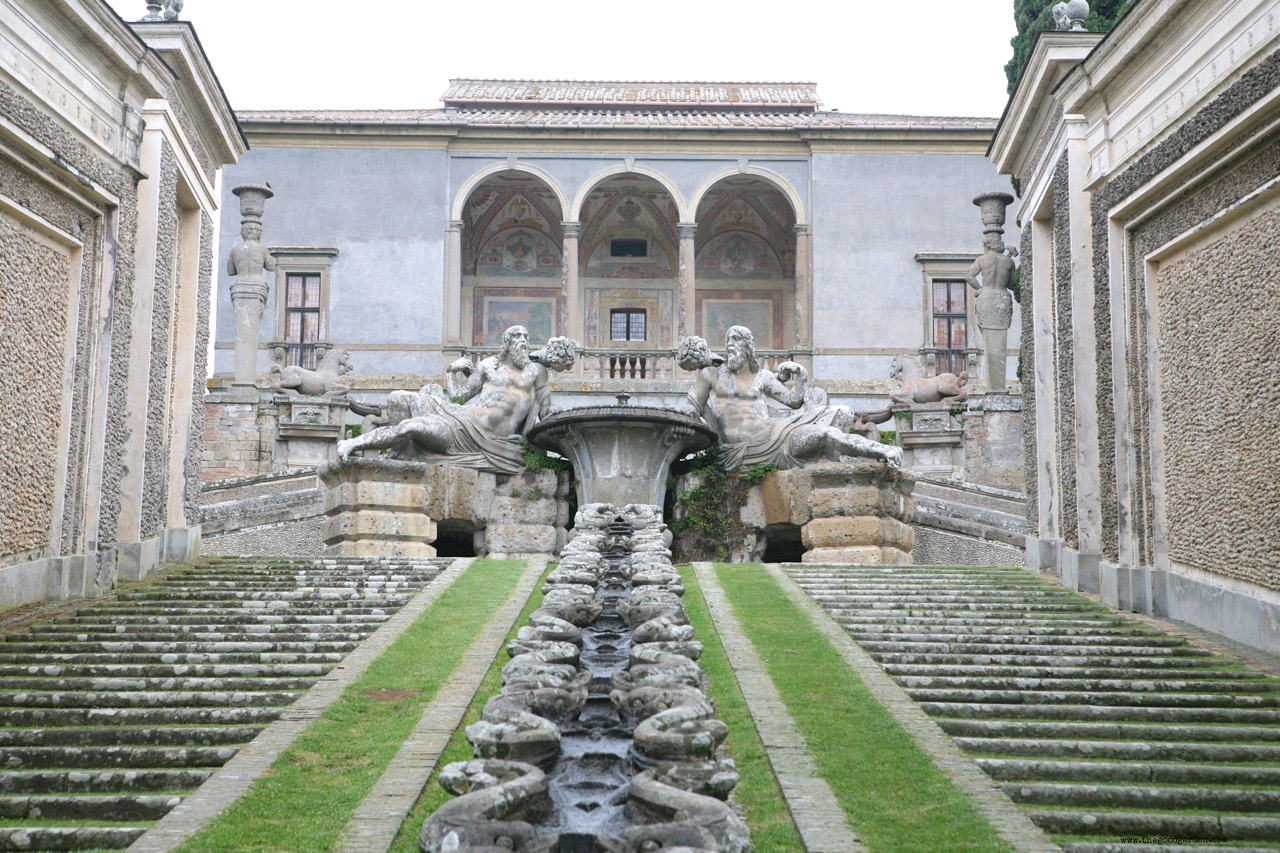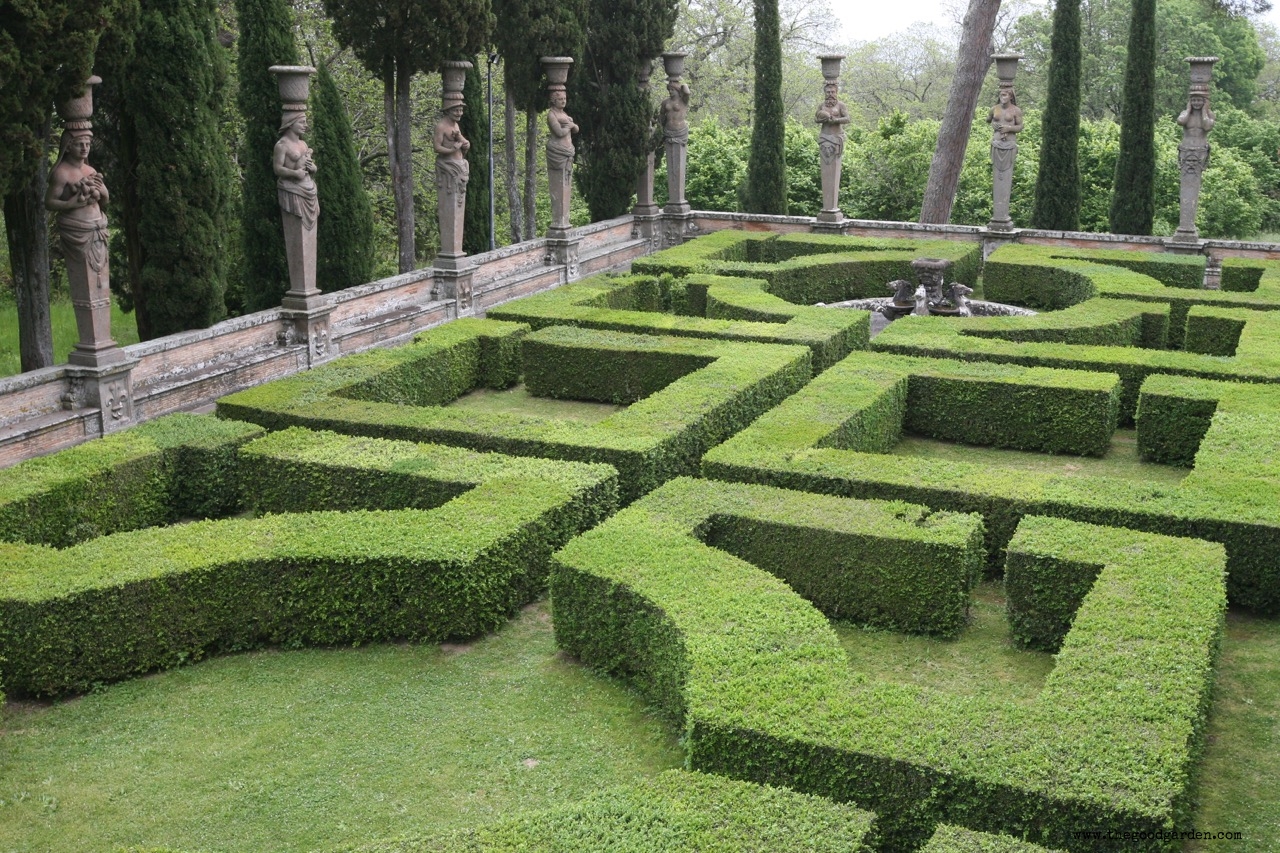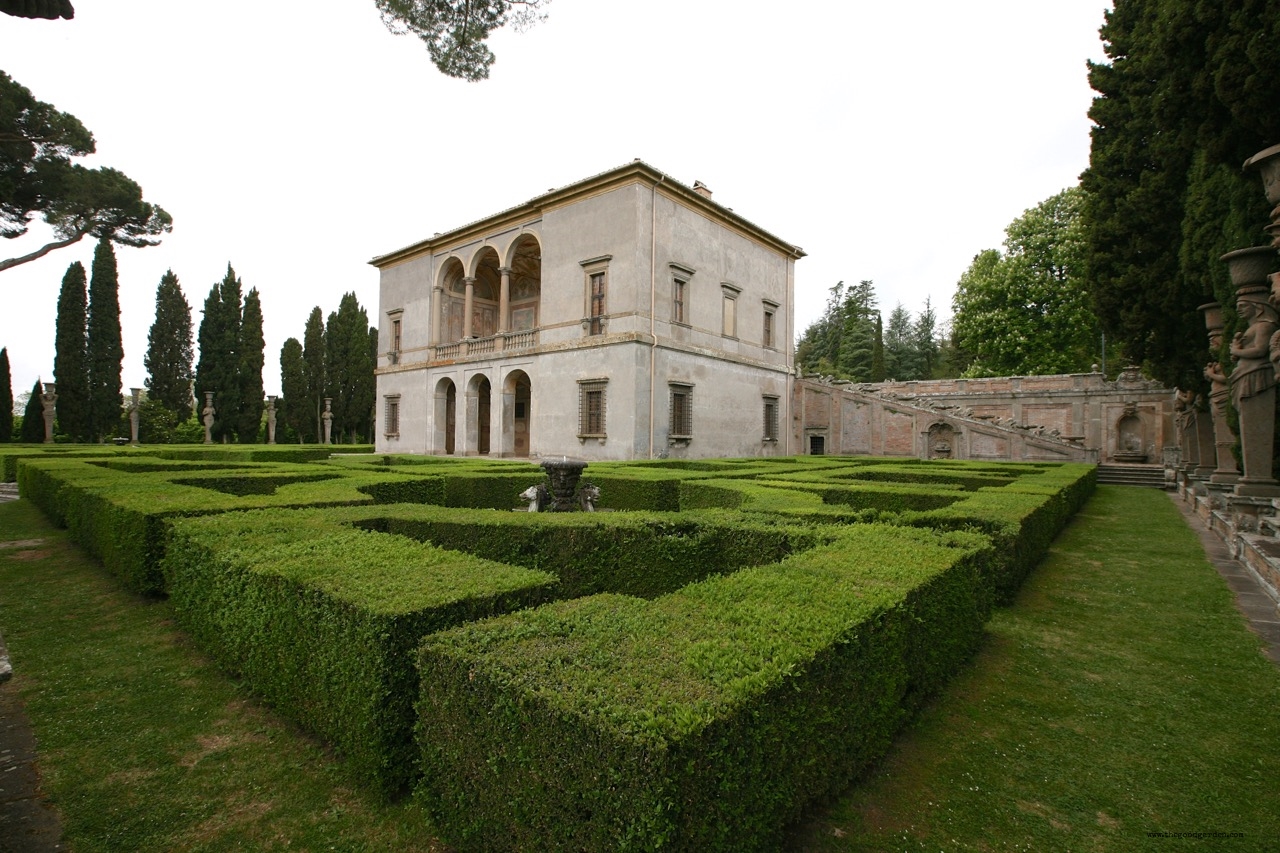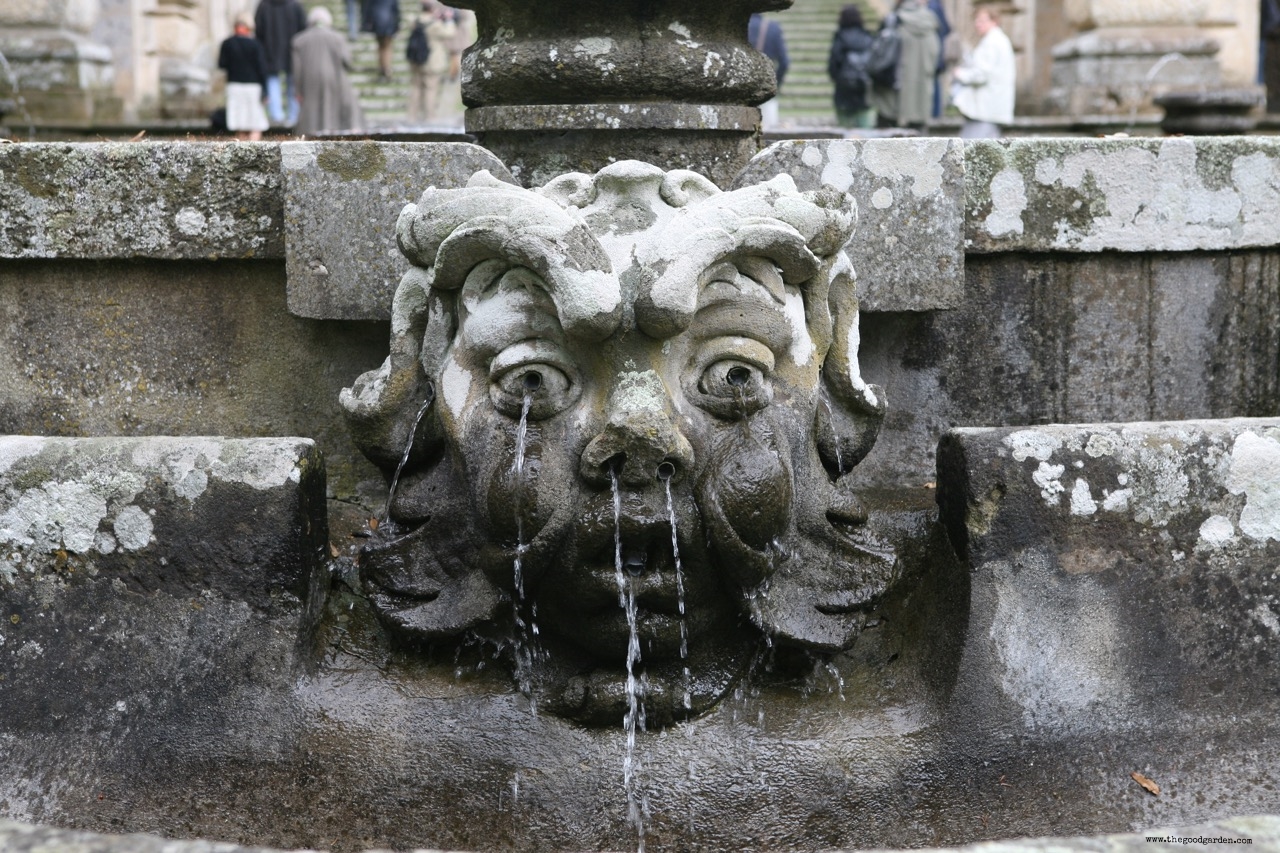The European renaissance marked the end of the middle ages. By 1500 the city-states of Italy were flush with money and ready to show off. And part of showing off included a new style of garden.
So ‘out’ with the somewhat austere cloister garden and ‘in’ with the Italian renaissance garden. This new style emphasized a strong relationship between house and garden that was perfect for entertaining and impressing. Strong axes, symmetry, repetition, and water define this style. It drew inspiration from Roman gardens like Hadrian’s Villa, Greek sculpture, as well as from Islamic gardens. Mythological references anchored the garden in history, and expressed the sophistication, wealth, and power of the garden’s creator.
One of my favorite Italian renaissance gardens is at Villa Farnese near Viterbo, Italy. Begun in the 1570’s by Alessandro Farnese II, the upper garden pictured above was designed by architect Giacomo del Duca.
With limited time and a love of visiting gardens in the morning, I arrived early to explore this garden. You can imagine my disappointment when the staff informed me that the garden was closed! How could I be so near to one of the most famous gardens and not be able to go in. Deflated, I decided to spend a few hours exploring the main eight-sided castle-like building. I felt teased by the glimpses of the garden I got from the windows. After a few hours of touring the castle, I started to get ready to leave. But the docent, who had been following me throughout my visit, motioned for me to follow her to a side door. She ushered me through and into the garden. It was closed only in the morning-- but open in the afternoon! My patience was rewarded: I was allowed into the garden a full hour before the official opening time. What a treat to have this time by myself in one of the most famous gardens in the world.
The garden is laid out in a series of sections. A formal lower garden unfolds from the main villa. A path leads to a rose garden and an azalea-lined stairway. The stairway took me to a ‘bosco’ or naturalistic woodland, and beyond: a dirt trail pointed my way up a hill. Just as I thought this trail reached the end of the property, the most amazing garden appeared. Symmetrical stone walls and grottos, and a central water chain, led me to an ‘intimate’ villa and formal garden further above.
By the time I reached the upper ‘secret’ garden, the magnificent water features were still turned off, so I was able to enjoy the space in silence.
As I reached the final upper edge of the property, about one hour into my private time in the garden, gurgling sounds began to come from all directions. At first the sound of air passing through the pipes feeding the fountain heads, then drops of water all around, then finally the fountains at full force.
The starting of the water features marked the official opening time of the garden. A space that had been utterly quiet, was now filled with the music of splashing water. By the time I descended, I met the first busload of tourists.

